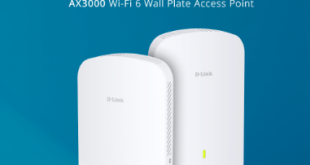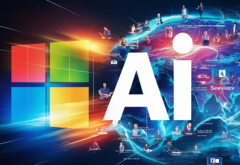The unveiling of ChatGPT in November 2022 marked a turning point, propelling generative AI to the forefront of the technology industry. With rapid growth, generative AI is now hailed as the catalyst for reshaping various sectors. Particularly impactful is its influence on smart devices, the primary conduits for user interactions with AI tools.
As the PC takes center stage in productivity, especially within business environments, the integration of embedded AI capabilities presents a monumental opportunity. With a wave of device refreshes anticipated four years post-COVID and ahead of Windows 10’s end-of-life, players in the PC industry, including OEMs, software providers, and component suppliers, face a crucial task—effectively communicating the advantages of AI-capable PCs to consumers. Success in this endeavor is key to revitalizing a market that has experienced a prolonged decline.
The shift toward hybrid AI computing is evident, emphasizing the importance of on-device AI. While cloud-based tools initiated the AI surge, moving certain workloads onto client devices is gaining traction. Privacy and security take precedence as businesses and consumers seek AI use cases based on models trained on local data.
The benefits of on-device AI are multi-faceted. On-device functionality ensures that private data stays on the PC, providing users with peace of mind. Local inferencing addresses connectivity issues, ensuring AI tools are usable anywhere and anytime, particularly for low-latency tasks. Moreover, organizations can optimize AI tool usage according to budgets, mitigating rising costs associated with accessing cloud resources.
Impact on the PC Industry
Defining AI-capable PCs becomes crucial, with Canalys proposing a hardware-based definition. An AI-capable PC, at a minimum, must possess a dedicated chipset or block for on-device AI workloads. Canalys uses the term “NPU” (Neural Processing Unit) as an umbrella term for this required hardware. The definition excludes Chromebooks for now, but future releases could bring them into this evolving market.
Canalys projects that nearly one in five PCs shipped in 2024 will be AI-capable, including M series Macs and initial launches of Windows PCs with AI-accelerated chipsets. The AI-capable share of total PC shipments is expected to surge from 2025, driven by device refreshes preceding the end of service for Windows 10 in October of that year. By 2026, AI-capable PCs are forecasted to dominate most shipments.
Processor Vendors Drive the AI-capable PC Revolution
In the rapidly evolving landscape of AI-capable PCs, processor vendors emerge as pivotal players, steering the industry toward a future where computational efficiency and innovative user experiences take center stage. As the race intensifies between x86 and ARM camps, the incorporation of Neural Processing Units (NPUs) marks a transformative shift, promising enhanced efficiency, reduced response times, and lower CPU power consumption.
In the ARM camp, exemplified by industry leaders Apple and Qualcomm, NPUs are not novel additions. Drawing from their extensive smartphone expertise, these companies strategically position themselves at the forefront of NPU efficiency. Meanwhile, giants in the x86 camp, Intel and AMD, recognize the importance of NPUs in the evolving landscape. Intel’s acquisition of Movidius and AMD’s strategic move with Xilinx underscore their commitment. AMD’s Phoenix (7040) series and Intel’s Core Ultra series showcase their NPU-powered advancements, with AMD leading the computational power race.
In the current NPU technology arena, Qualcomm’s X Elite, boasting 45 TOPS, stands as the fastest among processor manufacturers. Apple’s M3 and AMD’s Hawk Point (8040) series follow closely, with Intel’s Core Ultra processors slightly lagging but compensating with established market influence. While these manufacturers differ in TOPS, the importance of recognizing varying NPU operation calculations based on data structures cannot be understated. The industry must align on benchmarks, with INT8 serving as a potential standard.
AI-capable PCs are already making waves, with MacBook Pros featuring Apple’s M3 chip and Windows-based products equipped with AMD’s Phoenix processors already in the market. Intel’s Core Ultra devices joined the fray in December 2023. The impending release of additional PCs, coinciding with the rollout of a new Windows operating system, promises a significant milestone for the PC industry.
Beyond Processors: Upgrading Key Components
The evolution of AI-capable PCs extends beyond processors, demanding upgrades in key components. Memory, crucial for intensive data transfer and processing demands of AI applications, sees a surge in demand for higher bandwidth solutions. LPDDR5X and LPDDR5T technologies emerge as energy-efficient, high-bandwidth options, enticing PC vendors to adopt them widely.
Other peripheral components crucial for AI-capable PCs witness upgrades. High-speed data transfer and charging, equal or improved battery life, enhanced real-time sensing, and response, and increased storage capacity for trained AI models become paramount. Graphic cards (GPUs) continue to play a vital role, especially for gamers and audiovisual producers, with Nvidia’s expected 2025 launch of the GeForce RTX 50 series poised to further invigorate this segment.
Microsoft’s Hybrid AI Vision
Microsoft emerges as a trailblazer, aligning its future success with AI. With substantial investments in OpenAI, Inflection AI, Adept AI, and Builder.ai, Microsoft’s Windows PC installed base becomes a crucial platform for delivering AI experiences. The Hybrid AI Loop signifies its commitment to seamless cloud-to-device experiences, fostering developer outreach and ensuring user adoption of AI tools. Microsoft’s strategic moves, including bringing Copilot to Windows 10 devices, set the stage for a future where AI defines user experiences in its ecosystem.
Apple’s Unique Approach
Apple’s Macs have been AI-capable since 2020, with the M1 chip and the Apple Neural Engine (ANE) at the core. Despite a conservative approach to marketing AI, Apple’s on-device AI enhancements to macOS are evident. From autocorrect using transformer language models to real-time sensing improvements in camera modules and microphones, Apple seamlessly integrates machine learning into the user experience. Developer support, including the Core ML framework, Swift, and Xcode, demonstrates Apple’s commitment to making AI applications functional, user-friendly, and privacy-centric.
The journey of AI-capable PCs is marked by fierce competition, strategic advancements, and a holistic approach to upgrading key components. Processor vendors, led by industry giants, navigate this dynamic landscape, setting the stage for a future where AI defines user experiences across devices. Microsoft’s hybrid AI vision and Apple’s unique approach underscore the significance of seamless integration, developer support, and user-centric AI applications. As the industry hurtles toward this AI-driven future, the potential for innovation and transformative user experiences remains boundless.
A Look into Consumer and Commercial Adoption
In the ever-evolving landscape of AI-capable PCs, the end of 2023 marked a clear dominance by Macs in shipments, aligning seamlessly with Canalys’ current category definition. However, a significant shift is on the horizon as Windows-based products gear up to enter the market, driven by the progressive integration of AI capabilities into CPU product lines by tech giants Intel, AMD, and Qualcomm. The implications are profound, with AI-capable PCs poised to redefine efficiency and productivity, particularly in the commercial sector.
Commercial Sector: A Driving Force for Growth
Forecasts by Canalys paint a compelling picture of the trajectory of AI-capable PCs in the commercial sector. A staggering triple-fold increase in shipments to businesses is anticipated in 2024, constituting half of all devices shipped within the category. The year 2025 marks an inflection point, with over 100 million devices expected to be shipped, driven by business demand and a peak wave of refresh ahead of Windows 10’s end of service. Looking ahead to 2027, businesses are set to receive over 100 million AI-capable PCs out of a total of 174 million, representing a substantial 94% CAGR.
- The Phases of Commercial Adoption: Commercial adoption will begin in a targeted manner, limiting these potent devices to niche roles initially. Higher prices and a cost-sensitive market play a role, and the selectivity is just the initial phase in a broader adoption cycle. As strategic businesses recognize the immediate benefits in job functions like research and development, data analysis, and creative design, mainstream acceptance will follow. The pioneers in these spaces will set the precedent for widespread corporate uptake and buy-in from IT decision-makers.
- Transformation of the Commercial Sector: The commercial sector is standing on the brink of transformation, with AI-capable PCs positioned at its core. Tech-savvy businesses embracing AI will catalyze this change, showcasing the tangible benefits of integration. The future of work will be reshaped by AI-driven features that enhance collaboration, streamline content generation, and optimize audio and video for a connected and efficient workplace. As on-device AI becomes more affordable, its role in the commercial space will expand, becoming an integral part of the modern professional toolkit.
- AI in Business Models: The rise of AI-capable PCs aligns with significant developments in business models. Commercial entities are not merely adopting on-device AI for advanced computational abilities; they are leveraging it for a competitive edge. The integration of AI tools into productivity software and operating systems will pave the way for new business practices and innovation. With the end-of-life for older technologies like Windows 10, businesses view AI-capable PCs as the next step in their technological evolution, syncing with natural upgrade cycles to modernize operations.
Consumer Expectations: Beyond Productivity
Consumer adoption of AI-capable PCs is expected to be more modest than in the commercial segment. However, there’s a growing interest in generative AI applications, with users becoming increasingly aware of the services available. Leveraging this trend, PC OEMs have an opportunity to provide differentiated AI features for consumers. Operating system providers, like Microsoft, can play a crucial role in unifying user experiences around productivity and security features enhanced by AI.
- Device Ecosystem: The Role of Consumer-Focused Companies: Consumer-focused companies, particularly Apple, hold a substantial advantage in the device ecosystem. While smartphones continue to act as central nodes, AI-capable PCs become vital components for a connected experience, leveraging data and insights from other edge devices. This interconnected approach creates comprehensive solutions for creative work, learning, and potentially introduces new use cases through interactions with other AI-capable consumer devices.
- Enhancing Accessibility and Ease of Use for Consumers: As AI applications and tools proliferate across hardware, operating systems, and third-party software layers, PC vendors must prioritize ease of use and accessibility for consumers. Simple processes, such as incorporating a physical button for launching on-device AI assistants or tools, can significantly enhance the user experience. Additional features like biometric security or voice recognition contribute to both security and personalization benefits.
Opportunities Ahead for AI-Capable PCs
Major PC vendors have expressed a strong commitment to AI-capable PCs, considering them a significant innovation for market recovery in 2024 and beyond. AI PCs are poised to create brand-new user experiences, provide a huge productivity uplift, and mark an inflection point for the industry. With upcoming launches from key players like AMD, Intel, and others, the market is set to witness a compelling shift, offering consumers a compelling reason to transition away from Windows 10.
- Boosting Replacement Cycles: The integration of AI capabilities directly into devices represents a meaningful innovation for an industry that has sought additional tailwinds to capture opportunities arising from increased installed bases. This innovation is especially crucial for knowledge workers, and the benefits of AI tools in their jobs will play a pivotal role in accelerating replacement cycles. The movement away from Windows 10 and natural aging of devices will coincide with a sense of urgency among organizations and consumers, leading to a more predictable future for replacement cycles.
- Monetizing Meaningfully and Differentiation: While AI-capable PCs initially share similar performance specifications, the need for differentiation becomes paramount. PC vendors can set themselves apart by integrating out-of-the-box AI software and applications, including pre-installed Large Language Models (LLMs). Initiatives like Lenovo’s “AI Innovators Program” and Dell’s partnership with Hugging Face lay a foundation for future expansion. By offering targeted AI tools for different end-user segments, PC vendors position AI-capable PCs as more than just hardware providers.
Channel Optimism around the AI Opportunity
The channel partner landscape is buzzing with optimism as the prospect of AI-driven opportunities takes center stage. A recent survey reflects a significant shift in attitudes, with 41% of channel partners identifying AI as a “tremendous” or “significant” growth opportunity. This surge in positivity between 2018 and 2023 is indicative of the increasing recognition of AI’s potential. While skepticism persists among some partners, the overall momentum is undeniably pointing in a positive direction, paving the way for vendors to tap into a broader pool of partners eager to explore AI-centric products and services.
However, amidst this optimism, a notable discrepancy emerges regarding AI-capable PCs. As of the close of 2023, channel partners exhibit caution concerning the immediate impact of AI-capable PCs on customer device refresh plans. A mere 26% of partners, according to Canalys’ December 2023 survey, acknowledge that announcements about AI-capable PCs influenced their customers’ plans. An additional 11% noted acceleration, while 15% reported delays until these devices become available.
The underlying challenge lies in the lack of clarity regarding the value propositions of AI-capable PCs. Channel partners, key players in driving new technology adoption in the commercial sector, remain unconvinced about the short-term benefits. This skepticism is amplified by the absence of these devices in the market, with 33% of respondents citing potential delays in customer purchases as they await technological advancements.
Convincing Channel Partners: A Crucial Step for Commercial Adoption
The channel partner ecosystem, encompassing distributors, resellers, systems integrators, and managed service providers, plays a pivotal role in the success of emerging technologies in the commercial sector. To expedite the transition from experimenting with AI tools to deploying focused strategies, vendors must collaborate with channel partners effectively.
Investing in partner education is paramount. Vendors need to elucidate the benefits of AI-capable PCs, both for partners’ businesses and their customers. Providing market development fund support and comprehensive knowledge about product roadmaps empowers partners to serve customers more effectively. Practical training, including first-hand experiences in deploying on-device AI, ensures that partners are well-equipped to guide customers in their digital transformation journey.
The transformative journey of AI-capable PCs is set to redefine user experiences across commercial and consumer landscapes. As businesses embrace AI for enhanced productivity and efficiency, and consumers gradually explore the possibilities of generative AI applications, the role of on-device AI becomes integral. With strategic commitments from major players, a clear roadmap for consumer and commercial adoption, and a focus on differentiation and meaningful monetization, AI-capable PCs are poised to unleash their full potential, heralding a new era in the evolution of personal computing.
 Latest Technology News Today – Get Latest Information Technology Updates and Services Latest Technology News Today – Get Latest Information Technology Updates and Services
Latest Technology News Today – Get Latest Information Technology Updates and Services Latest Technology News Today – Get Latest Information Technology Updates and Services 









